Understanding the Intricate Life Cycle of Bees
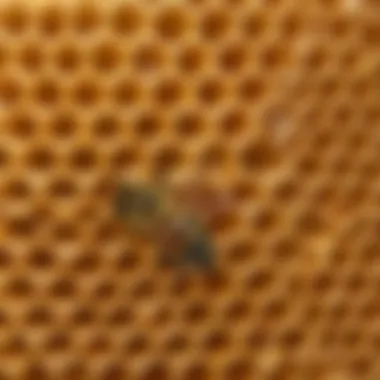
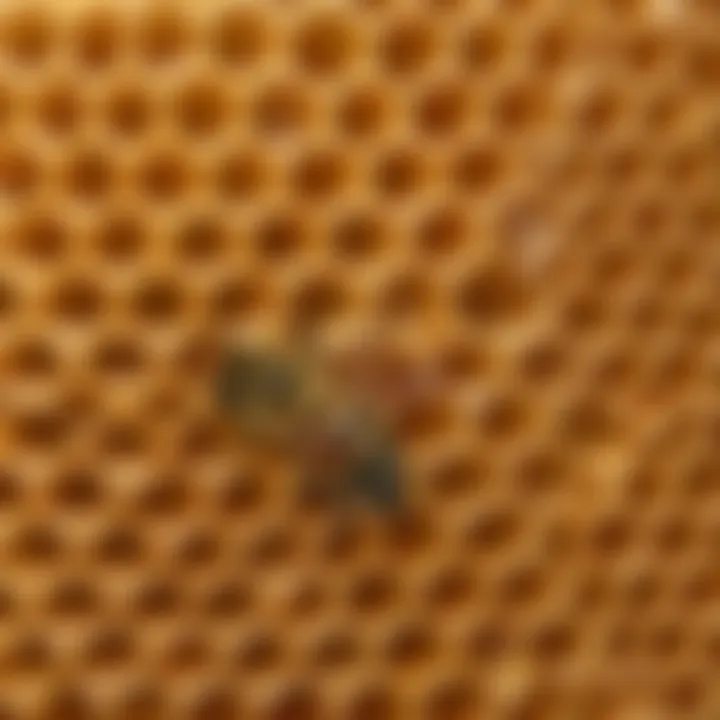
Intro
Science Fun Facts
Interesting Trivia and Facts
- A bee's life cycle has four stages: eggs, larvae, pupae, and adult.
- Bees communicate with each other through dances and pheromones.
- An average honeybee can visit about 2,000 flowers in a single day.
- A queen bee can lay up to 2,000 eggs a day during peak season.
Quirky Science Stories
One fascinating story is about the mason bee. These bees do not live in hives. Instead, they build their homes in holes and cracks, often in bamboo. This makes them a pollinator in urban gardens, showcasing their unique adaptability to different environments.
Amazing Science Records
Did you know that a colony of bees can produce over 100 pounds of honey in a single year? This showcases not only the productivity of the bees but also affirms their hard work.
Happy bees go out foraging in the sun, while others stay home to tend to the young larvae.
Thought-Provoking Questions
- Why do you think bees are essential for food production?
- How does the decline in bee populations affect our daily lives?
Discover the Wonders of Science
Exploring Various Scientific Concepts
Each stage of the bee life cycle introduces numerous concepts, such as metamorphosis, resource allocation, and collaboration. These ideas extend far beyond the life of bees, echoing significant ecological principles.
Educational Videos and Animations
Visual learning aids can help understand the bee life cycle compellingly. Websites like Britannica offer educational videos that can illuminate these processes.
Interactive Learning Tools
Interactive web resources can provide quizzes and activities to test knowledge about bee biology and behavior. Sites like Reddit host discussions focusing on environmental issues related to bees, enriching understanding.
Real-Life Applications of Science
Understanding bees impacts agriculture directly. Healthy bee populations lead to better crop yields due to effective pollination. They also emphasize the importance of environmental conservation policies.
Science Quiz Time
Interactive Quizzes
Tests can highlight knowledge retention. For example, quiz students on the lifecycle stages of bees:
- Egg
- Larva
- Pupa
- Adult
Multiple Choice Questions
- What is the primary role of a queen bee?
- A) To collect nectar
- B) To lay eggs
- C) To dance for communication
- Correct Answer: B
Brain Teasers and Puzzles
Why not create crosswords or word searches featuring bee-related vocabulary? Such activities foster valuable connections with scientific language.
Learning Through Gamification
Games focused on pollination and colony health can engage students. Aspects like habitat threats could inspire discussions about conservation efforts.
Science Experiment Showcase
Fun and Engaging Experiments
Conduct experiments to observe how bees collect pollen. Plant flowers known to attract bees, then watch what happens.
Step-by-Step Instructions


- Choose a sunny day.
- Gradually plant flowers in your garden or in pots.
- Observe bee activity.
Materials List
- Seed packets
- Small pots (if planting in pots)
- Water for watering
Safety Tips and Precautions
Be mindful around bees. If you are allergic, ensure someone knowledgeable is present during outdoor activities.
Preamble to Bee Life Cycles
Bees play a vital role in our ecosystem, and understanding their life cycle helps us appreciate their value. This section will illuminate key points about the various stages of bees' lives. Delving into their lifecycle educates readers about growth, development, and the roles that bees occupy in the environment. Raising awareness can produce a community that respects and conserves these important creatures.
Importance of Bees in Nature
The significance of bees in nature is profound and multilayered. They are crucial players in pollination, a process that allows many plants to reproduce. Nearly 75% of the crops we consume are dependent on pollinators like bees. Without them, food supplies would drastically decline.
Additionally, bees support biodiversity. They help in maintaining healthy ecosystems by aiding the growth of plants, which in turn sustain other wildlife. Importantly, bees are not just about honey production; they encompass many species each contributing uniquely to their habitats.
The Egg Stage
The egg stage is a foundational phase in the life cycle of bees, crucial for the survival and continuity of the colony. Understanding this stage yields insights into how a colony grows and how different castes of bees come into existence. The health of the eggs significantly impacts the colony’s future dynamics, influencing its capacity to thrive.
Duration of the Egg Stage
The egg stage lasts for about three days. During this time, the eggs are fertilized and nurtured within the worker bees. After being laid by the queen in specially prepared cells, the eggs are kept at a stable and controlled temperature, which is vital for their development.
Once hatched, the cells become nurseries for young larvae. Alongside the incubation process, a steady supply of food is crucial during this development. Worker bees remain highly active, ensuring that no fluctuations in temperature or nutrition occur.
Conditions for Development
The conditions required for optimal development of bee eggs are restrictive yet essential.
- Temperature: A constant warmth is imperative, typically around 34 to 36 degrees Celsius, to support egg hatch.
- Humidity: High humidity levels help maintain the right environment within the brood cells. This factor reduces risks associated with dehydration.
- Protection: Eggs camouflage well but require vigilance. Worker bees monitor the eggs vigilantly to guard against threats such as parasites or pests.
In summary, the successful development of bee eggs depends on creating an environment where temperature, moisture, and security are finely balanced.
The Larval Stage
The larval stage of bees is a crucial period in their life cycle. After emerging from the egg, a bee larva enters a world of growth and development. This stage sets the foundation for the adult bee's physical capabilities and roles within the hive. Understanding the processes in this critical phase can help highlight the importance of bees to our environment.
Feeding and Growth
At birth, the bee larvae are fed royal jelly, a nutrient-rich substance produced by worker bees. Royal jelly is a potent food that helps in the rapid growth of these larvae. It is fed exclusively to the queen larvae, while worker and drone larvae receive a mixture of royal jelly and other foods. This fraction determines their specific roles when they become adults.
As the larvae grow, they undergo a series of molts where they shed their exoskeletons. This molting process is significant, as it increases their body size and prepares them for pupation later. During this feeding phase, the larvae can gain vast amounts of weight, sometimes resulting in a 1,500-fold increase in size by the end of this stage.
Transformation in the Cocoon
After completing its growth, the larva begins its transformation by weaving a cocoon around itself. This transformative process is called pupation. Inside the cocoon, the larva is protected as it transitions into an adult bee. Inside this safe environment, remarkable changes start to occur. The larva's cells restructure to form the body of the adult bee, including organs and wings.
Pupation can take a week or more, depending on the type of bee. The time spent inside the cocoon is vital, as it leads to full development. This transformation process is significant for the survival and efficiency of any bee colony. It ensures that adult bees are equipped for their duties in the hive, maximizing their coordinated efforts for pollination and hive maintenance.
Important Note: The larval stage provides insights into the varying roles of adult bees and underscores their fundamental contribution to ecosystems.
As we continue to learn about the life cycle of bees, it is clear that each stage and period of growth is critical when it comes to species sustainability.
The Pupation Phase
The pupation phase is a critical stage in the life cycle of bees. It represents a transitional period where a larva undergoes significant changes to eventually emerge as an adult bee. Understanding this phase helps to comprehend the complexity of bee development and their role in nature. This period not only ensures that the bees are adequately matured, but it also signifies a strong connection between the environment and the lifecycle of bees.
Duration of Pupation
The duration of the pupation phase varies depending on factors such as bee species and environmental temperature. Typically, the pupation phase lasts from 10 to 14 days. However, in colder climates, this time might be extended since lower temperatures can slow down development. On the other hand, warmer conditions can lead to a slightly shorter duration.
Key Points of Duration
- Species Variation: Different types of bees, including honey bees and bumblebees, exhibit different pupa maturation times.
- Environmental Influence: Temperature and humidity significantly impact the pupation period. Optimal conditions can shorten the duration.
Metamorphosis Process
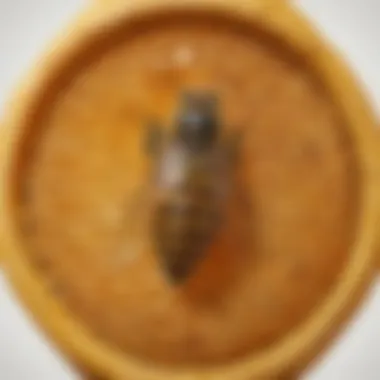
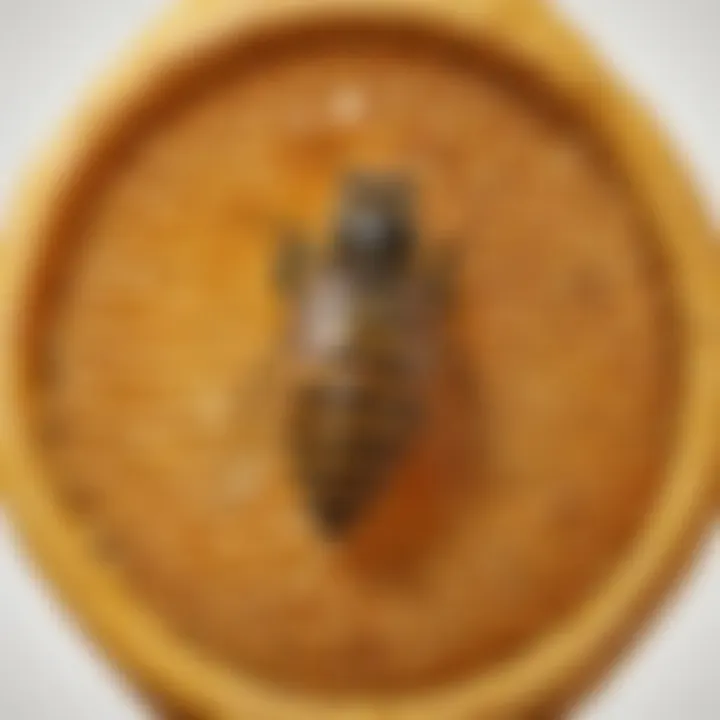
During the metamorphosis process, the larva undergoes bodily changes that allow it to transform into a fully-formed adult bee. The transformation is both remarkable and complex. The larval body structure breaks down at the cellular level and then re-forms into the adult body plan. This includes development of wings, legs, and other organs distinct to bee life.
Important Aspects of Metamorphosis
- Structural Changes: The outer larval skin dissolves, enabling the formation of new body parts essential for adult bees.
- Nutrient Accumulation: The larva absorbs all its food in the previous larvae stage which supports its metamorphosis into an adult.
- Sensorial Development: Sensory organs become more sophisticated during pupation.
Emerging from this phase is crucial for bee functionality within a colony, ensuring the continuation of pollination and maintenance of ecosystem balance.
After emerging, adult bees must quickly adapt to their roles in the colony, whether it be foraging, caring for new eggs, or protecting the hive. The pupation phase is thus a compelling aspect of bee life, rich with biological significance and essential for continuance of their species.
Emergence of Adult Bees
The emergence of adult bees is a crucial stage in the life cycle of a bee colony. It signifies the shift from the developmental stages they have passed through. These stages include the egg, larva, and pupation phases. Now fully formed, young bees take on specific roles essential for the survival and efficiency of the colony. Understanding this process informs us about the overall health and sustainability of bee populations.
Physical Characteristics
Upon emerging as adults, bees exhibit distinct physical traits that categorize them into different roles within the hive. Worker bees, for example, are smaller than drone bees but have stronger wings and a more pronounced proboscis. Worker bees are critical for foraging and maintaining the hive. Drones are larger and have robust bodies, crucial for mating during their brief lifetimes. Queen bees command the colony with their size and are vital for reproduction. These physical differences play a key part in colony dynamics and efficiency.
First Actions after Emergence
After emerging, the immediate actions of adult bees are important for integration into the hive.
- Worker Bees: They first clean their cells and release a scent that will help the hive recognize each other. They quickly learn their duties, which could involve nectar gathering or hive maintenance.
- Drone Bees: These bees ready themselves for the summer mating flights, a critical task since their primary role is procreation.
- Queen Bees: A newly hatched queen either emerges ready to take flight or, in some cases, may fight other emerging queens in the hive for dominance.
Understanding the sequence of events and behaviors following emergence directly reflects a bee's role in its community. These actions set the foundation for their future within the hive and ultimately impact the larger ecosystem that relies on bees for pollination and plant growth.
Remember: The first few moments of an adult bee's life can dictate its role and the health of its colony. The interplay of these physical features and their first actions are pivotal as they integrate into the hive’s hierarchy.
Types of Bees and Their Roles
Understanding the different types of bees is essential in grasping their complex life cycle and the roles they play within a colony.
Queen Bees
The queen bee is the heart of the hive. She is uniquely reproductive, and her primary function is to lay eggs. A single queen is typically present in a colony, ensuring the population grows and stays healthy. The queen bee can lay thousands of eggs each day during peak season. This ensures that the hive remains active and productive. Her pheromones also maintain social order within the colony, signaling worker bees and drones.
Characteristics of Queen Bees:
- Larger than other bees
- Lives for several years, unlike most worker bees
- He's responsible for laying all the eggs in the hive
It's crucial for a beekeeping endeavor to monitor the health of the queen bee as her well-being impacts the hive's overall productivity. If the queen dies or becomes weak, a hive can eventually collapse as the distribution of responsibilities becomes unbalanced.
Worker Bees
Worker bees are non-reproductive female bees. They are the backbone of the colony, performing various essential tasks, including the collection of nectar and pollen. Worker bees also care for the larvae and maintain the hive's structure.
Roles of Worker Bees:
- Foraging: Collect nectar, pollen, and water to support the hive.
- Nursing: Feed and care for the developing larvae.
- Cleaning: Maintain hygiene within the hive to prevent disease.
- Guarding: Protect the hive from predators and intruders.
The lifespan of a worker bee can vary from 5 to 6 weeks during the summer months, and they often spend these short lives working meticulously for their community. Understanding their contributions is vital since they directly impact the hive's sustainability and productivity.
Drone Bees
Drone bees are the male bees in the colony. Their main purpose is reproductive. Drones do not collect pollen or nectar; their role is primarily to mate with a queen from another hive. Therefore, the condition of the drone population is essential for inter-colony genetics and diversity.
Details on Drone Bees:
- Larger than workers and do not have stingers.
- Drones are born from unfertilized eggs.
- The existence of drones supports genetic variation, which helps the hive adapt to changing environmental conditions.
Drones typically do not live long, about eight weeks or so, and are often expelled from the hive before winter when resources become scarce. Understanding drones enables us to appreciate biological diversity within bee communities.
Important Note: Each type of bee plays a distinct role in maintaining the colony's health and functionality. Without these roles, the hive would struggle to survive, demonstrating the interconnectedness within their ecosystem.
Understanding the variety of bees and their specialized responsibility within a colony can provide deep insights into how this essential species functions, contributing to ecological balance through tournament structures.
The Duration of the Life Cycle
The discussion surrounding the duration of the life cycle of bees is pivotal to grasping their biological significance. The life cycle of bees encompasses a variety of stages, notably from egg to adult, affecting their roles within the colony and their impact on the environment. A good understanding of this duration reveals not only insights into the bees’ adaptation strategies but also essential considerations regarding their lifecycle management in ecological terms.
Variances among Types of Bees
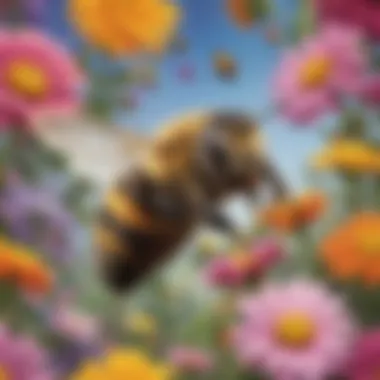
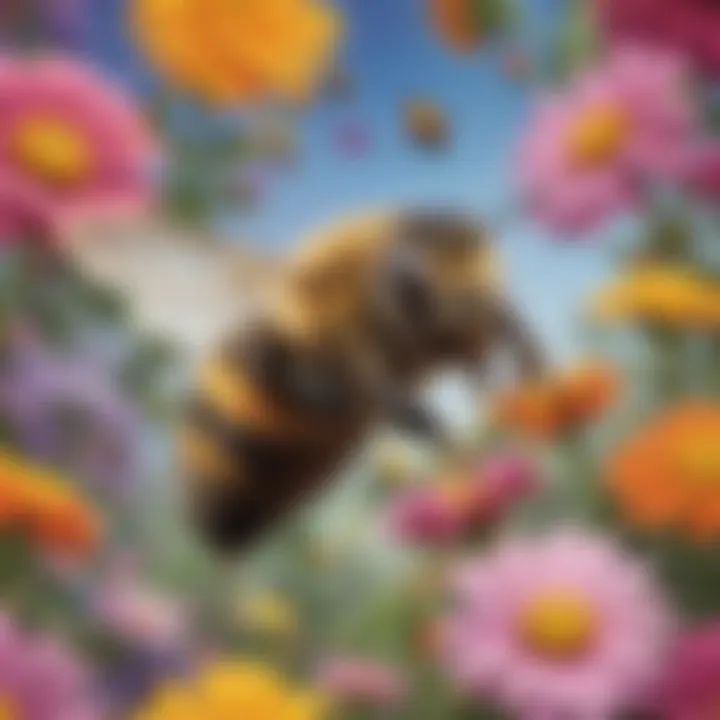
Different types of bees exhibit distinct life cycle durations. For instance, honeybee lifespans can vary greatly between drones, worker bees, and queen bees. Workers generally live for about 5 to 6 weeks, engaging actively in foraging, and caring for larvae. Drones, however, exist primarily for mating purposes, living for only a few months. In contrast, a queen bee expends substantial energy with long lives reaching up to five years; their primary role in the hive profoundly influences population maintenance and growth.
In solitary bees, encumbered by different breeding mechanisms, durations are also unique. For example, leafcutter bees may only live for a few weeks as adults, but they strategically layer out their life cycle to ensure continuity through dormant stages during unfriendly climates. This diversification in duration showcases the varied ecological strategies that support each type's sustainability in nature.
Environmental Influences
The life cycle of bees is notably susceptible to environmental influences. Factors such as temperature, seasonal changes, and availability of food resources dramatically impact their reproductive cycles and lifespan. Warmer climates can expedite larval development, resulting in faster maturation. Take, for example, an unseasonably warm spring that prompts bee emergence earlier than normal. This can pose risks with predators and food shortages, leading to challenges in nourishment and survival.
Pesticides and land use changes also shape bee life cycles. Valuable honeybee species may be impacted adversely by harmful chemicals, leading to declining colonies. They must adapt swiftly to shifting habitats and resource availability. Studies show that such disturbances can alter signaling behaviors among bees that dictate their active phases, which carries profound implications for pollination practices.
Bee populations and life cycles are sensitive to both natural and anthropogenic impacts, stressing the importance of habitat integrity.
The Role of Bees in Pollination
Pollination is a crucial process in nature, as it facilitates reproduction in many plants. The role of bees in pollination is incredibly significant. Without them, many plants would struggle to reproduce, which would affect entire ecosystems. The endeavor of pollination led by bees affects our food supply as well. In this section, we will examine the specific functions bees fulfill as pollinators and how this corresponds to larger ecological systems.
Bees as Pollinators
Bees are among the most efficient pollinators. When they visit flowers to collect nectar and pollen for food, they often brush against the flower's anthers. That causes pollen to stick to their bodies. As they continue to search for additional flowers, they transfer this pollen to the stigmas of other blooms. This process encourages fertilization, leading to the production of seeds and fruits.
Benefits of Pollination by Bees
The contributions of bees to pollination are multifaceted. Some benefits include:
- Increased Crop Yields: Many crops depend on bee pollination, which boosts the quantity of food produced.
- Diversity in Plant Life: By transferring pollen, bees promote genetic diversity, ensuring that plants are resilient to diseases and environmental changes.
- Sustenance for Wildlife: The foods and plants that result from bee pollination create habitats and provide food for innumerable species.
By visiting a multitude of plants, bees do not just assist a single species, but ensure that a broader array of flora can thrive.
Impact on Ecosystems
The impact of bees extends beyond just agriculture. They are essential agents of biodiversity and health within ecosystems. Honeybees, bumblebees, and various native bee species contribute vastly to a spiderweb of ecological processes.
Key Feeling Towards Ecosystems: Interested Observers
Strong evidence supports the connection between bee activity and ecosystem health:
- Food Webs: Their involvement supports larger food webs, as many pollinated plants serve as food sources for other animals.
- Soil Fertility: Diverse plant life helps maintain soil quality and prevents erosion, which is essential to ecosystem stability.
- Climate Regulation: Plants aid in regulating the climate by stabilizing soil and reducing greenhouse gas levels. Bees play a part in sustaining this plant diversity.
Conservation of Bees
The conservation of bees plays a critical role in maintaining biodiversity and ensuring food security. Bees, as pollinators, directly influence the growth of many plants, which in turn supports various animals and ecosystems. Protecting bee populations means safeguarding the intricate web of life that relies on them.
Threats to Bee Populations
Various challenges contribute to the decline of bee populations. Habitat loss is among the most significant threats as urban development and agricultural practices replace natural habitats. This loss reduces food sources and nesting sites for bees.
Pesticides are another considerable danger. Many conventional pesticides disrupt the nervous systems of insects, leading to disorientation and death. Additionally, diseases carried by other insect species can infect bee populations.
Factors like climate change also affect bees. Altered weather patterns can shift the timing of flowering plants and might affect the bees' foraging efforts. Without timely food sources, bees face the risk of starvation.
In factorizing the plight of bees, we highlight:
- Loss of habitat
- Use of harmful pesticides
- Global warming and climate changes
What Can Be Done
Certain actions can help in conserving bee populations. Public awareness is key. When people understand the role of bees in food production, they are more likely to support conservation efforts.
Plants can be cultivated that are bee-friendly. Native flora is especially beneficial for providing proper dietary needs. Avoiding the use of pesticides and embracing organic alternatives can create safer environments for these pollinators.
Local beekeeping can also promote positive relationships with bees. By constructing habitat strategies such as bee hotels, we enable bees to find safe nesting places.
Closure
The conclusion of this article is key to understanding the full significance of bees in our world. It synthesizes the information presented throughout, encapsulating essential insights regarding the various stages of a bee's life cycle, their roles within the colony, and their immense contribution to ecosystems. A clear grasp of these elements not only illuminates our understanding of these fascinating insects but also highlights the urgency of their conservation.
Summary of Key Points
- Life Cycle Stages: Bees undergo distinct life stages: egg, larva, pupa, and adult. Each stage is crucial for development and survival.
- Types of Bees: There are three major types of bees in a colony — queen, worker, and drone. Each has specific roles that are vital to the colony's functioning and success.
- Pollination Role: Bees play a critical role in pollinating plants. This is indispensable for food production and maintaining a balanced ecosystem.
- Threats to Bees: Factors like habitat loss, pesticides, and climate change are serious threats to bee populations. Awareness increases the chance of positive action.
- Conservation Efforts: Efforts such as creating bee-friendly environments can aid in mitigating the decline of bees and ensuring the continuation of their life cycle.
The Future of Bees
The future of bees is uncertain but vital. Understanding their life cycle helps us appreciate their importance in the environment. As children and caregivers learn about these processes, they can advocate for better protections. The outlook on bees greatly depends on collective actions taken to safeguard their habitats and reduce pesticide use.
This knowledge can inspire younger generations to foster a connection with nature and engages them in the ongoing effort for bee conservation. Several organizations are actively working to raise awareness about the pressing issues bee populations face. Staying informed helps empower individuals to contribute positively to the plight of bees, ensuring their lifecycle continues.
For more detailed information regarding bees, you can explore resources like Wikipedia, Britannica, or discussions on forums like Reddit or social networks like Facebook.







